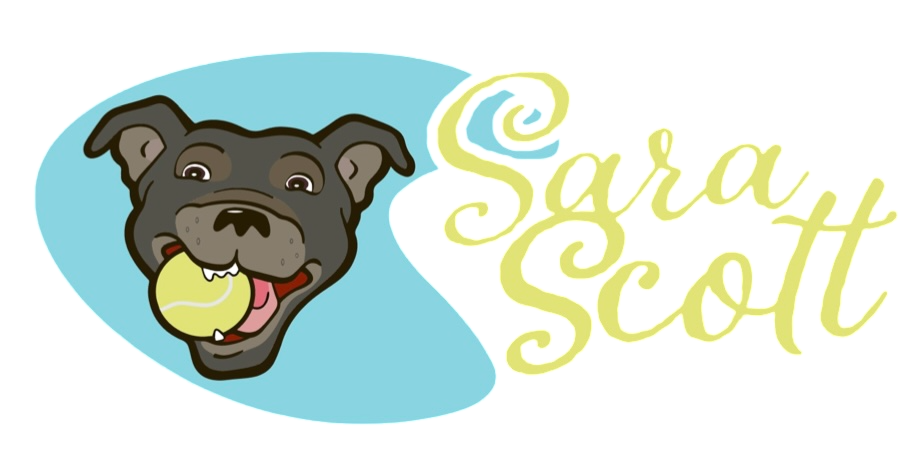Let them sniff, let them sniff, let them sniff!
- Sara Scott
- Nov 15, 2019
- 4 min read
Updated: Mar 5
The weather outside is frightful, but the fire is so delightful… until you have to take your dog out to pee, and they refuse to go. Fluffy is busy sniffing the bushes and seems distracted. It’s wet and cold, and you want to go back inside, so you tell Fluffy to hurry up again—this time with a more frustrated tone. In response, Fluffy sniffs even more intensely. The more impatient you get, the more determined she seems to keep her nose glued to the ground. It feels like she’s deliberately ignoring you just to keep you standing in the cold.
Why is Fluffy being so stubborn? The truth is, she isn’t. Sniffing plays an essential role in emotional regulation for dogs. If you’ve ever wondered why sniffing is so critical for your dog’s mental and physical well-being, I break it down in my latest research-backed post: [The Science of Sniffing: Why It’s Essential for Your Dog’s Well-Being].

Sniffing as a Calming Mechanism
Sniffing is a natural stress reliever for dogs. Engaging their nose lowers heart rate and activates the parasympathetic nervous system—the body’s rest and digest mode. The faster and more intensely a dog sniffs, the quicker their pulse lowers. Knowing this, let’s re-examine the scenario above:
Fluffy likely picked up on your frustration, which made her feel stressed, so she instinctively sniffed more to calm herself down. When your frustration increased, so did her need to regulate her emotions through sniffing. She wasn’t ignoring you—she was trying to self-soothe and avoid conflict.
When we become keen observers of our dog’s behavior, we can learn a lot about them. I’ve had many clients whose dogs perform cues perfectly indoors but seem to forget everything as soon as they step outside. The dog pulls, keeps their nose to the ground, and refuses food rewards. The owner gets frustrated, assuming the dog is ignoring them or is not food motivated in distracting environments.
But here’s the thing: a dog that isn’t motivated by food is a dead dog. All living creatures are biologically wired to eat. When a dog suddenly loses interest in food, something else is going on.
Sniffing and the Nervous System
Dogs don’t speak our language, so we have to interpret their behavior. A dog refusing food outdoors is often experiencing a sympathetic nervous system response/-the body’s flight or flight mode. When the brain perceives stress, it signals the body to release adrenaline, which increases heart rate and redirects blood flow to the muscles for quick action. This process also inhibits digestion, which is why a stressed dog often won’t take treats.
Correcting or punishing a dog for sniffing in these moments inhibits their ability to calm themselves down. Instead, allowing sniffing encourages a parasympathetic nervous system response, the body’s natural recovery mode. This shift reverses the effects of stress, allowing the dog to settle and suddenly, food motivation returns.
Proactive Sniffing for a Calmer Dog
Just like humans use exercise, deep breathing, or meditation to manage daily stress, dogs need sniffing opportunities built into their routine.
Decompression Walks
A decompression walk is an unstructured sniff walk where your dog sets the pace and explores freely. Studies show that dogs sniff 280% more on a long leash than a short leash. Letting your dog meander without micromanagement allows them to naturally regulate their emotions.
If it's safe, let your dog off-leash in a secure area or use a dog drag line to allow more freedom while maintaining control. Learn more about how to use a dog drag line here.
The rules? No rushing, no leave-it cues, just let your dog be a dog.
Bonus: Decompression walks benefit humans too. Research on forest bathing shows that simply being in nature lowers stress and reduces symptoms of anxiety and depression. A win-win for both species.
Scent Work and Sniffing Games
Introducing structured nosework into your dog’s life is another powerful way to leverage the calming benefits of sniffing. Reactive dogs excel at nosework, and it’s no coincidence sniffing lowers arousal, builds focus, and promotes resilience.
Some easy ways to encourage sniffing at home:
Scatter feeding — Toss kibble into the grass and let your dog sniff it out.
Snuffle mats — These mimic natural foraging and help dogs decompress indoors.
Nosework games — Hide treats around the house and teach your dog to find them.
Every single one of my coaching clients gets nosework exercises added to their training plans because they’re that effective for building calmer, more confident dogs.
Final Thoughts
The next time your dog seems distracted or stubborn, take a deep breath and pause. Are they really ignoring you or are they using sniffing to regulate their emotions?
Instead of rushing them, try standing still and letting them sniff. Support their need to process the world through their nose. Whether it’s a decompression walk, scent games, or free sniffing on your daily outings, prioritizing sniffing will lead to a happier, more balanced dog.
🐾 Want to learn how to incorporate sniffing into your dog’s routine for better behavior and emotional health?
Whether you’re in the San Francisco Bay Area, Washington, New York or beyond, my dog behavior coaching program helps owners like you bring out the best in their dogs. Sign up for my newsletter or learn more about my behavior coaching program here.

Thank you for this article! You gave some great advice for a situation I am in with my 12 year old dog, and made a positive impact for her!!